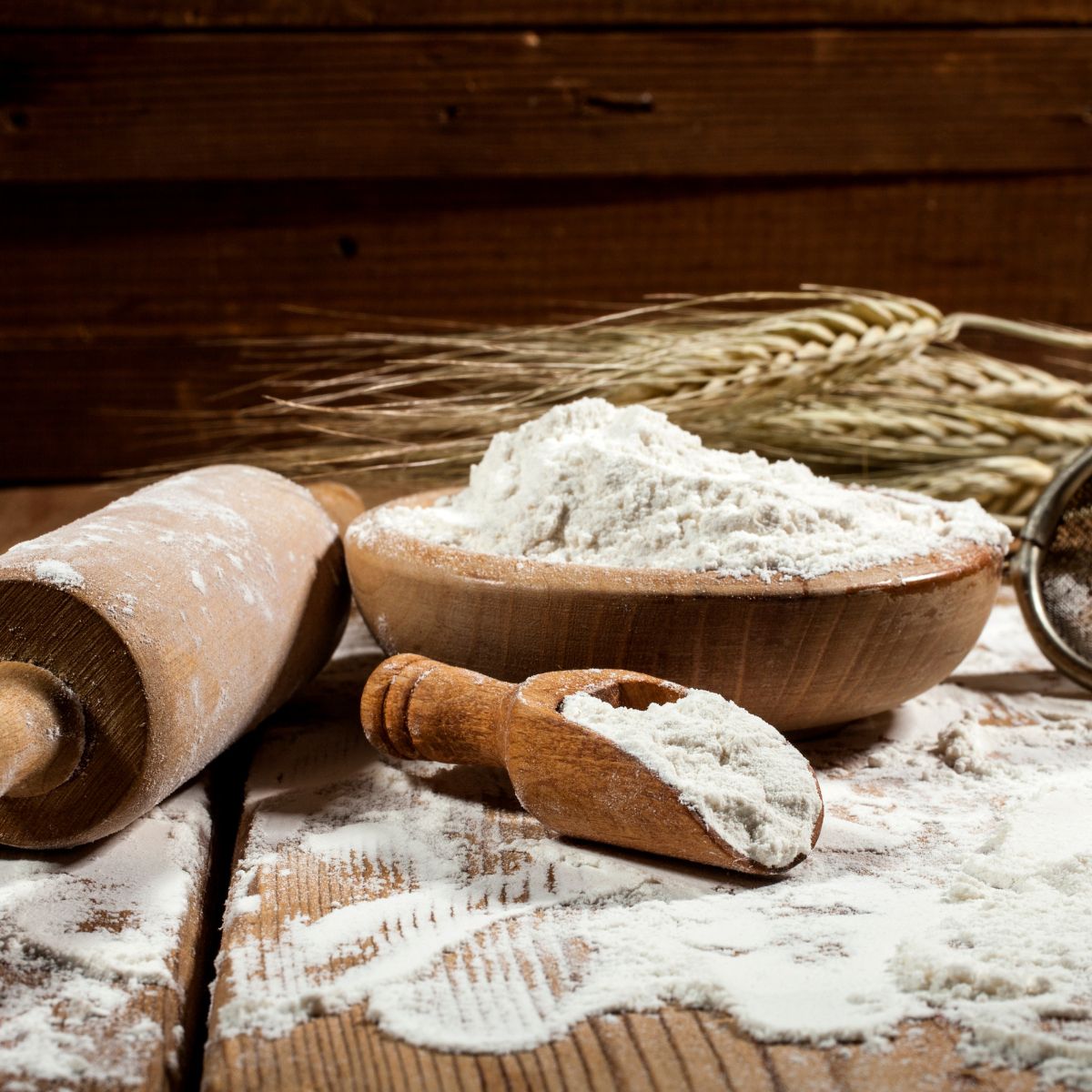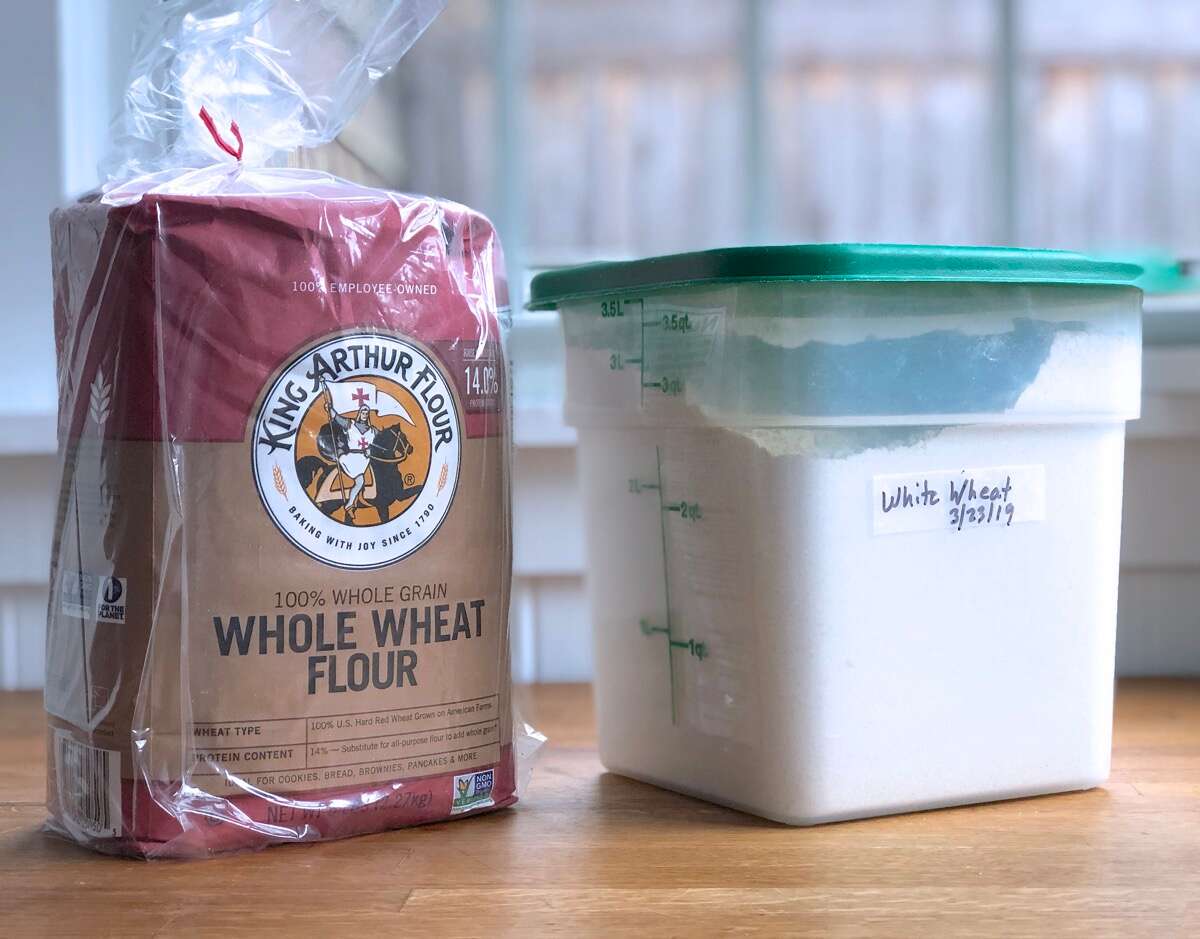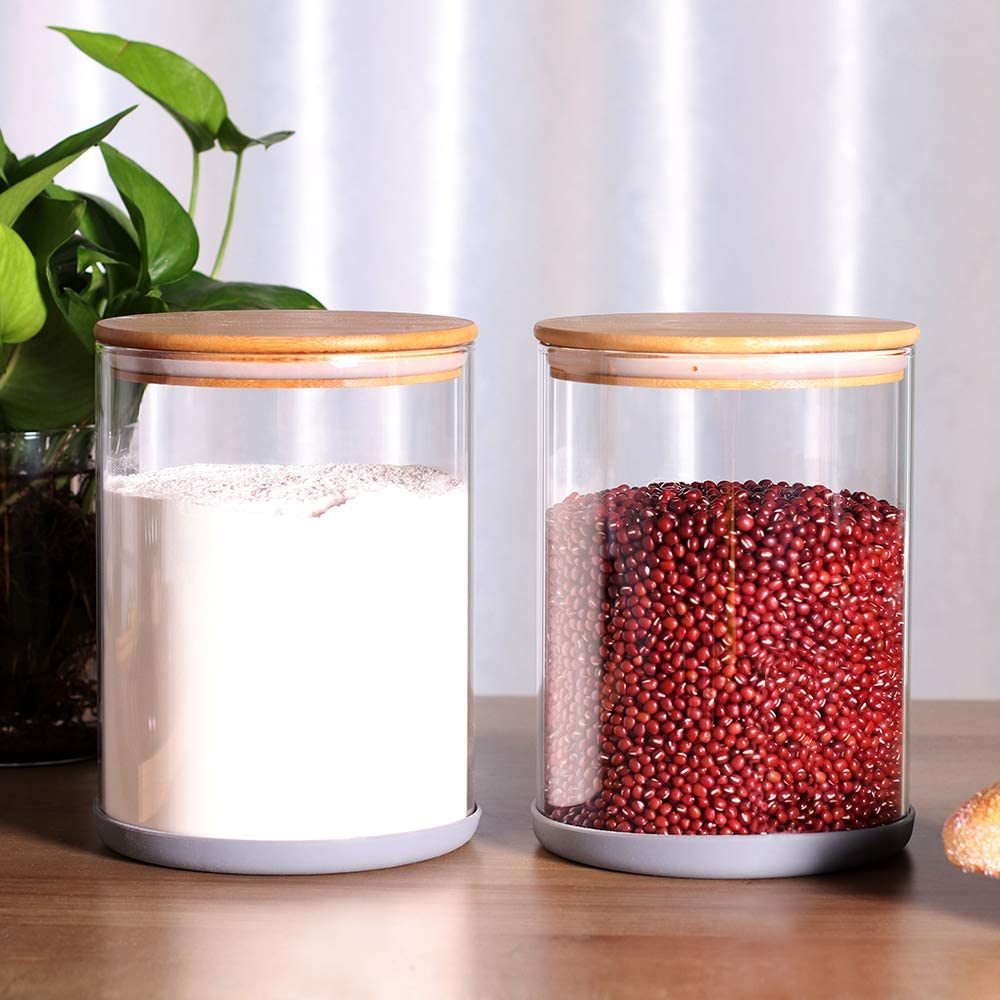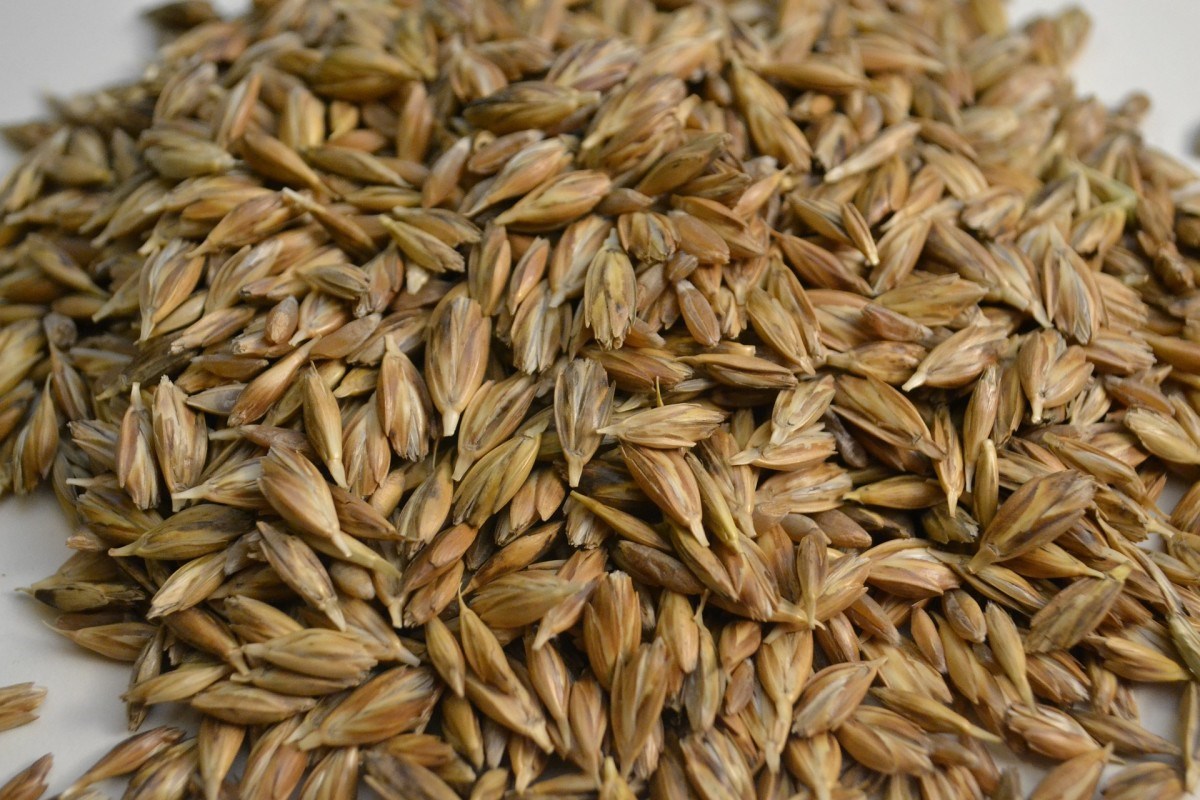

Articles
How To Store Self Rising Flour Long Term
Modified: February 23, 2024
Learn the best methods for storing self-rising flour long term with our helpful articles. Ensure your flour stays fresh and ready for baking!
(Many of the links in this article redirect to a specific reviewed product. Your purchase of these products through affiliate links helps to generate commission for Storables.com, at no extra cost. Learn more)
Introduction
Welcome to our guide on how to store self-rising flour long term. Self-rising flour is a versatile ingredient that is commonly used in baking, making it a pantry staple for many households. However, if not stored properly, self-rising flour can lose its freshness and effectiveness over time. In this article, we will explore the importance of storing self-rising flour long term, the proper storage containers to use, the steps involved in storing it, and how to determine its shelf life. By following these guidelines, you can ensure that your self-rising flour remains fresh and ready to use whenever you need it.
Key Takeaways:
- Properly storing self-rising flour long term ensures extended shelf life, cost savings, convenience, and emergency preparedness, making it a valuable pantry staple for baking enthusiasts.
- Choosing the right airtight containers, following proper storage steps, and periodically testing the shelf life of stored self-rising flour are essential for maintaining its freshness and quality over time.
Read more: How To Store Flour Long Term In Buckets
What is Self Rising Flour?
Self-rising flour is a type of flour that already contains leavening agents, such as baking powder and salt. It is a convenient option for baking as it eliminates the need to measure and mix these ingredients separately. Self-rising flour is commonly used in recipes that call for quick and easy preparation, such as biscuits, pancakes, and certain cakes.
The composition of self-rising flour typically includes all-purpose flour, baking powder, and salt. The baking powder helps the dough or batter rise, resulting in a lighter texture, while the salt adds flavor to the final product.
This type of flour is different from all-purpose flour or plain flour, which does not contain any leavening agents. All-purpose flour is often used in recipes that require the addition of baking powder or yeast to achieve the desired rise.
Self-rising flour is readily available in many grocery stores, but it can also be easily made at home by combining the following ingredients:
- 1 cup all-purpose flour
- 1 1/2 teaspoons baking powder
- 1/2 teaspoon salt
Sift or whisk the ingredients together and your homemade self-rising flour is ready to use.
Now that we understand what self-rising flour is, let’s delve into why it is important to store it properly for long term use.
Why Store Self Rising Flour Long Term?
Storing self-rising flour properly for long term use is essential to maintain its freshness, quality, and effectiveness. Here are a few reasons why storing self-rising flour long term is important:
- Extended Shelf Life: Self-rising flour, like any other food product, has a limited shelf life. By storing it properly, you can extend its shelf life and prevent it from spoiling or becoming stale. This allows you to have a constant supply of fresh self-rising flour on hand, eliminating the need for frequent grocery store runs.
- Cost Savings: Buying self-rising flour in bulk or during sales can lead to significant cost savings. By storing it long term, you can take advantage of these deals and ensure that you always have a stock of self-rising flour available at a fraction of the cost.
- Convenience: Having self-rising flour readily available in your pantry offers convenience and saves time during recipe preparation. Instead of making a trip to the store or mixing leavening agents separately, you can simply reach for your stored self-rising flour and start baking immediately.
- Emergency Preparedness: In times of emergencies or unforeseen circumstances, having a well-stocked pantry becomes crucial. Self-rising flour can be a valuable ingredient for baking bread, biscuits, or other essential food items, providing sustenance for you and your family during challenging times.
Properly storing self-rising flour is the key to maintaining its quality and ensuring it remains usable for an extended period. In the next sections, we will discuss the appropriate storage containers for self-rising flour and provide step-by-step instructions on how to store it long term.
Proper Storage Containers for Self Rising Flour
Choosing the right storage container for your self-rising flour is crucial in maintaining its freshness and preventing any contamination or moisture absorption. Here are some suitable containers for storing self-rising flour:
- Airtight Containers: The best option for storing self-rising flour is an airtight container. These containers seal tightly, preventing air and moisture from entering and affecting the quality of the flour. They come in various sizes and materials, such as plastic, glass, or metal. Look for containers that have a secure, tight-fitting lid to ensure maximum freshness.
- Mason Jars: Mason jars are a popular choice for storing dry ingredients like self-rising flour. They are made of glass and have an airtight seal when the metal lid is screwed on tightly. Mason jars not only keep the flour fresh but also allow you to see the contents easily.
- Food Storage Bags: If you prefer a flexible and space-saving option, food storage bags are a good choice. Opt for sturdy, thick plastic bags with airtight seals. Make sure to press out any excess air before sealing the bag to minimize the risk of moisture absorption.
- Plastic Storage Containers: Plastic storage containers with snap-on lids are convenient for storing self-rising flour. Choose containers specifically designed for food storage to ensure they are safe and BPA-free. Make sure the containers have a tight seal to keep the flour fresh and protected.
Regardless of the type of container you choose, it’s important to clean and dry it thoroughly before transferring the self-rising flour into it. Any moisture or residue from previous contents can affect the quality of the flour and potentially lead to spoilage.
Once you have selected the appropriate storage container, it’s time to learn the steps involved in storing self-rising flour long term. We will discuss these steps in the next section.
Store self-rising flour in an airtight container in a cool, dark place, away from moisture and heat. Label with the date of purchase and use within 6-8 months for best results.
Steps to Store Self Rising Flour Long Term
Storing self-rising flour long term requires proper handling and storage techniques to maintain its freshness and quality. Follow these steps to store your self-rising flour effectively:
- Choose a Suitable Container: Select an airtight container that is clean and dry. Ensure that it has a tight-fitting lid to prevent air and moisture from entering.
- Prepare the Container: Before transferring the self-rising flour, clean the container thoroughly with warm, soapy water. Rinse it well and dry it completely to remove any residue or moisture that could affect the flour’s quality.
- Label the Container: To easily identify the stored self-rising flour and keep track of its storage time, label the container with the purchase or expiration date. This will help you manage and rotate your supply of self-rising flour effectively.
- Transfer the Flour: Pour the self-rising flour into the chosen container, ensuring that it is filled to the appropriate level. Leave some headspace to accommodate expansion if the flour is exposed to temperature changes.
- Seal the Container: Close the container tightly with its lid, ensuring a secure seal. This will prevent any air or moisture from entering, which could lead to spoilage or loss of freshness.
- Storage Location: Store the container in a cool, dry, and dark place. Allowing the flour to be exposed to direct sunlight, heat, or humidity can degrade its quality over time.
- Avoid Temperature Fluctuations: Try to store the self-rising flour in a location where it will not be subjected to frequent temperature changes, such as near heating vents or in the refrigerator. Extremes of temperature can affect the texture and shelf life of the flour.
- Check for Contamination: Regularly inspect the container for any signs of contamination, such as insects or mold. If you notice any issues, discard the flour immediately and thoroughly clean the container before refilling it.
By following these steps, you can ensure that your self-rising flour remains fresh and usable for an extended period. In the next section, we will discuss how to test the shelf life of stored self-rising flour.
Read more: How To Store Bread Flour Long Term
Testing the Shelf Life of Stored Self Rising Flour
When storing self-rising flour long term, it’s important to periodically test its shelf life to ensure its freshness and quality. Here are a few ways to test the shelf life of stored self-rising flour:
- Visual Inspection: Examine the stored self-rising flour for any signs of discoloration, mold, or insects. If you notice any of these issues, it’s best to discard the flour as it may have spoiled.
- Smell Test: Take a whiff of the stored self-rising flour. If it has a rancid or off-putting odor, it’s an indication that the flour has gone bad and should not be used.
- Baking Test: Perform a simple baking test to check if the stored self-rising flour is still effective. Use a small amount of the flour in a recipe that requires leavening agents, such as biscuits or muffins. If the recipe does not rise properly or lacks the desired texture, it may be an indication that the flour has lost its leavening power and should be replaced.
- Expiration Date: Check the expiration date on the original packaging of the self-rising flour. While this date is not always an exact indicator of the flour’s freshness, it can give you a rough estimate of its shelf life. If the stored flour has exceeded its expiration date, it’s best to err on the side of caution and replace it.
- Taste Test: While self-rising flour is not typically consumed on its own, you can taste a small amount of it to check for any off flavors. If the flour has a stale or unpleasant taste, it may be an indication that it is no longer suitable for use.
It’s important to note that self-rising flour, like any food product, will gradually lose its effectiveness and freshness over time. It is recommended to use stored self-rising flour within 6 to 8 months for optimal results. If you are unsure about the quality of your stored self-rising flour, it’s always best to discard it and replace it with fresh flour to ensure the best baking results.
Now that you know how to test the shelf life of stored self-rising flour, let’s move on to discussing how to use stored self-rising flour in your baking endeavors.
Using Stored Self Rising Flour
Stored self-rising flour can be used in a variety of baking recipes, just like fresh self-rising flour. Here are some tips for using stored self-rising flour:
- Check for Freshness: Before using the stored self-rising flour, perform a visual inspection, smell test, or baking test as mentioned earlier to ensure its freshness and quality. If the flour shows any signs of spoilage or has a rancid smell, it’s best to discard it and use fresh flour instead.
- Measure Accurately: When using self-rising flour in a recipe, it’s essential to measure it accurately. Use a dry measuring cup to scoop the flour and level it off with a straightedge to ensure the right amount. Avoid compacting or packing the flour, as it may lead to inaccurate measurements and affect the final results.
- Adjust Recipes: Since self-rising flour already contains leavening agents, it’s important to adjust the other ingredients in your recipe accordingly. Reduce or omit the baking powder and salt called for in the original recipe since they are already incorporated in the self-rising flour. However, be mindful of the overall saltiness in your recipe if you choose to omit the additional salt.
- Store-Bought Recipes: When using a store-bought recipe that specifically calls for self-rising flour, follow the instructions as provided. These recipes are formulated to achieve the best results using self-rising flour without the need for adjustments.
- Experiment and Adapt: Don’t be afraid to experiment and adapt your favorite recipes to incorporate self-rising flour. However, be mindful of the leavening agents already present in the flour and make adjustments accordingly. It may require some trial and error to achieve the desired outcome.
Remember to always follow the recipe instructions and baking times when using self-rising flour, whether stored or fresh. This will ensure that your baked goods turn out light, fluffy, and delicious.
Now that you are equipped with the knowledge of using stored self-rising flour, let’s wrap up the article.
Conclusion
Properly storing self-rising flour long term is essential for maintaining its freshness and quality. By following the guidelines outlined in this article, you can ensure that your self-rising flour remains usable for an extended period, saving you time, money, and ensuring convenience in your baking endeavors.
We discussed the importance of storing self-rising flour long term, including the benefits of extended shelf life, cost savings, convenience, and emergency preparedness. Choosing the right storage container, such as airtight containers, mason jars, or food storage bags, is essential to protect the flour from air and moisture.
We provided step-by-step instructions on how to store self-rising flour long term, which includes preparing the container, transferring the flour, sealing the container, and storing it in a cool and dry location. Additionally, we emphasized the importance of periodically testing the shelf life of stored self-rising flour through visual inspection, smell test, baking test, checking the expiration date, and taste test.
When it comes to using stored self-rising flour, accurate measurement, adjusting recipes, and experimentation are key. By following these tips, you can confidently bake delicious treats using your stored self-rising flour.
In conclusion, proper storage of self-rising flour ensures that it remains fresh, effective, and ready to use whenever you need it. With a well-stocked supply of self-rising flour in your pantry, you can embark on various baking adventures without worrying about the quality of your ingredients. So, start storing your self-rising flour long term and enjoy the convenience it brings to your culinary creations!
Frequently Asked Questions about How To Store Self Rising Flour Long Term
Was this page helpful?
At Storables.com, we guarantee accurate and reliable information. Our content, validated by Expert Board Contributors, is crafted following stringent Editorial Policies. We're committed to providing you with well-researched, expert-backed insights for all your informational needs.















0 thoughts on “How To Store Self Rising Flour Long Term”